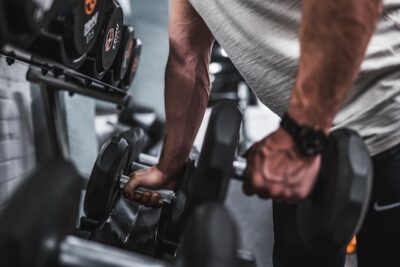What is an Asian Massage?
The term “Asian Massage” can refer to a variety of massage techniques that originated in Asia, such as Thai massage, Shiatsu massage, Ayurvedic massage, and Tui Na massage. These massages typically involve a combination of stretching, pressure, and manipulation of the body’s muscles, joints, and energy pathways to promote relaxation, relieve tension, and improve overall wellness.
However, it’s important to note that the term “Asian Massage” can also be associated with the illicit practice of massage parlors offering sexual services, which is not a legitimate form of massage therapy. It’s important to seek out reputable and licensed massage therapists who practice genuine Asian massage techniques for therapeutic purposes.
Different Kinds of Asian Massages:
There are several different types of Asian massages, each with its unique techniques and benefits. Here are some of the most popular Asian massage types:
1. Acupressure Massage:
Acupressure massage is a form of massage that involves applying pressure to specific points on the body to promote healing and relaxation. It is based on the principles of traditional Chinese medicine and is similar to acupuncture but without the use of needles.
Acupressure massage works by stimulating the body’s natural healing abilities and improving the flow of energy, or “Qi,” through the body’s meridians. Meridians are channeled through which energy flows throughout the body, and each meridian is associated with a specific organ or bodily function.
During an acupressure massage, the massage therapist applies pressure to specific acupressure points on the body using their fingers, hands, elbows, or other tools. The pressure is applied for a few seconds to a few minutes, depending on the severity of the condition being treated and the desired therapeutic effect. Acupressure massage can be used to treat a wide range of physical and emotional conditions, including headaches, back pain, digestive issues, insomnia, anxiety, and depression.
2. Amma or Anma:
Amma, also known as Anma, is a traditional Japanese massage technique that has been practiced for over 1,000 years. It is based on the principles of traditional Chinese medicine and is similar to other Asian massage techniques such as Shiatsu and Tui Na.
Amma massage involves the use of various techniques, including kneading, rolling, and tapping, to stimulate the flow of energy through the body’s meridians. The massage therapist uses their hands, fingers, elbows, and sometimes even their feet to apply pressure to specific points on the body.
The purpose of Amma massage is to promote relaxation, relieve tension and pain, improve circulation, and restore balance to the body’s energy flow. It is often used to treat a variety of conditions, including stress, anxiety, back pain, headaches, and digestive issues.
Amma massage is typically performed on a massage table or mat, with the client fully clothed. The massage therapist may use oils or lotions to facilitate the massage, but it is not necessary.
3. Ayurveda Massage:

Ayurveda massage is a form of massage that is rooted in the ancient Indian healing system of Ayurveda. Ayurveda is based on the belief that health and wellness depend on a delicate balance between the mind, body, and spirit.
Ayurveda massage involves the use of warm herbal oils that are customized to an individual’s body type, or dosha. The massage therapist uses long, flowing strokes to apply the oil to the body, with a focus on specific areas such as the back, neck, and shoulders.
Ayurveda massage aims to promote relaxation, improve circulation, and stimulate the body’s natural healing abilities. It can be used to treat a variety of conditions, including stress, anxiety, insomnia, and pain.
In addition to the massage itself, Ayurveda massage may also include other Ayurvedic therapies such as meditation, yoga, and herbal remedies. These therapies work together to promote overall health and well-being, restoring balance to the mind, body, and spirit.
It’s important to seek out a licensed and experienced Ayurveda practitioner or massage therapist to ensure a safe and effective massage experience. They will be able to tailor the massage to your individual needs and provide guidance on other Ayurvedic practices that can support your health and well-being.
4. Chi Nei Tsang:
Chi Nei Tsang is a type of massage that originated in China and is based on the principles of traditional Chinese medicine. It focuses on the abdomen and internal organs, which are believed to be the center of physical and emotional health.
Chi Nei Tsang translates to “internal organs chi transformation” and involves gentle but deep abdominal massage techniques. The massage therapist uses their hands and fingers to apply pressure to the abdomen, working on specific acupressure points to release tension and promote the flow of energy through the body.
The purpose of Chi Nei Tsang is to help detoxify and balance the body’s internal organs, which can become blocked or congested due to stress, poor diet, and other factors. It can be used to treat a variety of conditions, including digestive issues, menstrual problems, and emotional imbalances.
In addition to abdominal massage, Chi Nei Tsang may also include other traditional Chinese medicine therapies such as acupressure, cupping, and moxibustion. These therapies work together to promote overall health and well-being, restoring balance to the body and mind.
5. Jin Shin Jyutsu:
Jin Shin Jyutsu is a form of Japanese bodywork that involves the gentle application of pressure to specific points on the body, known as “safety energy locks.” The technique is based on the principles of traditional Japanese medicine, which views the body as a network of energy pathways.
The goal of Jin Shin Jyutsu is to harmonize and balance the flow of energy throughout the body, which is believed to be essential for optimal health and well-being. By applying pressure to the safety energy locks, the practitioner can help release any blockages or imbalances in the body’s energy flow.
Jin Shin Jyutsu is typically performed with the client fully clothed and lying down on a massage table. The practitioner uses their hands to gently hold specific points on the body for a few minutes at a time, following a specific sequence or “flow” of energy. Jin Shin Jyutsu is a non-invasive and gentle form of therapy that can be used to treat a wide range of physical and emotional conditions, including stress, anxiety, pain, and digestive issues.
6. Shiatsu:
Shiatsu is a form of Japanese massage that is based on the principles of traditional Chinese medicine. It involves the application of pressure to specific points on the body, known as “acupressure points,” using the fingers, palms, and thumbs.
The goal of Shiatsu is to promote the flow of energy, or “qi,” through the body’s meridians, which are believed to be the pathways through which energy flows. By applying pressure to specific points on these meridians, the practitioner can help release blockages or imbalances in the energy flow, promoting relaxation, reducing stress, and improving overall well-being.
Shiatsu is typically performed with the client fully clothed and lying on a mat on the floor, although it can also be performed on a massage table. The practitioner may use various techniques, such as stretching, rocking, and joint mobilization, in addition to pressure point massage.
7. Thai Massage:
A Thai massage is a form of bodywork that originated in Thailand and is based on the principles of traditional Thai medicine. It involves the application of pressure to specific points on the body, as well as stretching and compressive movements.
During a Thai massage, the client typically lies on a mat on the floor, while the practitioner uses their hands, feet, elbows, and knees to apply pressure to specific points on the body. The massage often includes stretching movements and joint mobilization techniques, as well as rhythmic rocking and compressive movements.
Thai massage is designed to promote the flow of energy through the body’s energy pathways, or “sen lines,” which are similar to the meridians in traditional Chinese medicine. By applying pressure to these points and stretching the body, the practitioner can help release tension and blockages in the energy flow, promoting relaxation, reducing stress, and improving overall well-being.
8. Indonesian Massage:
Indonesian Massage is a traditional massage technique that originated in Indonesia and combines elements of deep tissue massage, acupressure, and aromatherapy to promote relaxation, improve circulation, and relieve tension and pain in the body.
It is often performed with the use of warm herbal oils and can be tailored to meet the individual needs and preferences of the client. Indonesian massage is known for its deep, strong pressure and rhythmic movements, which can help release muscle tension and promote overall relaxation and well-being.
Benefits of Asian Massage:

Asian massages offer a wide range of benefits for physical, mental, and emotional health. Here are some of the potential benefits of Asian massage techniques:
- Reduces stress and anxiety: Many Asian massages are designed to promote relaxation and reduce stress and anxiety. They can help calm the mind and reduce tension in the body.
- Improves circulation: By promoting the flow of blood and lymphatic fluid through the body, Asian massages can improve circulation and help deliver nutrients and oxygen to the body’s tissues.
- Relieves pain: Many Asian massage techniques, such as acupressure and Shiatsu, are effective in relieving pain and tension in the body.
- Promotes healing: Asian massages can help stimulate the body’s natural healing processes, promoting faster recovery from injury or illness.
- Boosts immune function: By promoting relaxation and reducing stress, Asian massages can help boost the immune system and improve overall health.
- Enhances flexibility and range of motion: Techniques like Thai massage and Shiatsu involve stretching and mobilization of the joints, which can help increase flexibility and range of motion.
- Improves digestion: Techniques like Chi Nei Tsang and Ayurvedic massage focus on the abdomen and can help improve digestion and alleviate digestive issues.
- Promotes overall well-being: By restoring balance and harmony to the body’s energy systems, Asian massages can promote overall well-being and a sense of inner peace.
Asian Massage cost:
The cost of Asian massage can vary widely depending on the specific technique used, the location of the practice, and the experience and qualifications of the practitioner. In general, Asian massage sessions can range from $60 to $200 or more per hour.
Some factors that can influence the cost of Asian massage include:
- The type of massage technique used
- The length of the massage session
- The experience and qualifications of the practitioner
- The location of the practice (e.g. urban vs. rural areas)
- Additional services or amenities offered (such as aromatherapy or hot stones)
It’s important to do your research and choose a licensed and experienced practitioner who offers fair pricing for their services. Many practitioners offer package deals or discounts for multiple sessions, so it’s worth asking about these options if you plan to receive regular massages. Additionally, some health insurance plans may cover the cost of Asian massage if it is recommended by a healthcare provider for a specific medical condition.
Conclusion:
Asian massages are a diverse and rich collection of bodywork techniques that originated in various parts of Asia. These techniques are based on the principles of traditional Asian medicine and are designed to promote the flow of energy through the body, release tension, and restore balance and harmony.
Whether you choose acupressure, Amma, Ayurveda, Chi Nei Tsang, Jin Shin Jyutsu, Shiatsu, Thai massage, or another form of Asian massage, each technique offers unique benefits for physical, and mental health.
FAQs:
Is Asian massage painful?
Asian massage should not be painful, although some techniques may involve deep pressure or stretching that can be uncomfortable at times. It’s important to communicate with your practitioner and let them know if you experience any pain or discomfort during the massage.
What should I wear during an Asian massage?
The clothing requirements for an Asian massage will vary depending on the specific technique used. Some techniques, like Thai massage, are typically performed with the client fully clothed in loose, comfortable clothing. Other techniques, like Shiatsu, may involve direct skin contact and require the client to wear comfortable, stretchy clothing that allows for freedom of movement.
Is Asian massage safe?
Asian massage can be safe when performed by a licensed and experienced practitioner. It’s important to seek out a qualified practitioner and let them know about any medical conditions or concerns you may have before beginning the massage.
How long does an Asian massage session last?
The length of an Asian massage session will vary depending on the specific technique used and the individual practitioner. Sessions can range from 30 minutes to two hours or more.
Can anyone receive an Asian massage?
Most people can receive Asian massage, although certain techniques may not be appropriate for everyone. It’s important to consult with a licensed practitioner and let them know about any medical conditions or concerns you may have before beginning the massage.
How often should I receive an Asian massage?
The frequency of Asian massage will depend on your individual needs and health goals. Some people may benefit from regular weekly or monthly sessions, while others may only need occasional massages for maintenance and stress relief. It’s best to consult with a licensed practitioner to determine the best frequency of massage for your individual needs.










